Mastering Longboard Shaping: A Comprehensive Guide
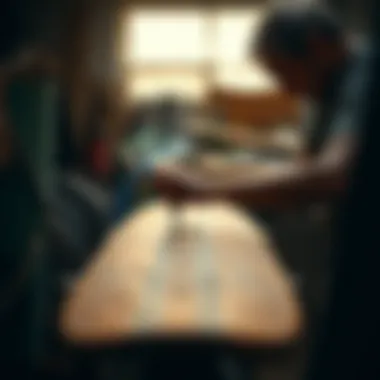
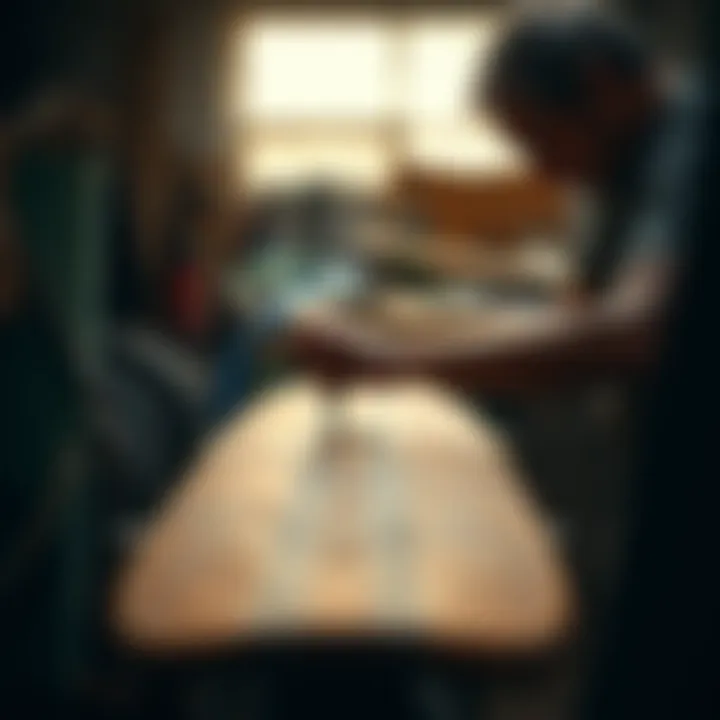
Intro
The longboard shaping process is not just about cutting wood and adding wheels; it’s a dance of craftsmanship, an intricate balancing act between performance and aesthetics. For those who thrive on adrenaline, understanding how to shape a longboard allows for a deeper connection to the sport, fostering a sense of ownership over one’s ride. From newcomers to seasoned shapers, each curve and angle holds significant meaning, influencing not only the board's performance but also the user's experience on it.
When you grab hold of that longboard, you’re not just riding; you’re engaging with the artistry behind every curve, flex, and graphic. It's a blend of science, intuition, and a sprinkle of creativity. The act of shaping a longboard is an art form in its own right, where tradition meets innovation, and the possibilities are as vast as the open roads waiting to be conquered.
In this comprehensive guide, we’ll explore the nuances of longboard shaping by delving into its various techniques, essential gear, safety measures, and even the connection with extreme sports culture. Whether you’re looking to refine your craft or simply understand the fundamentals, this article sheds light on every aspect of what it takes to become a skilled longboard shaper.
Understanding Longboard Shaping
The realm of longboard shaping is a rich tapestry that intertwines art, engineering, and personal expression. Grasping the nuances of this craft is vital for anyone looking to carve their niche within the world of longboarding. Not only does it encompass the technical know-how of creating a functional board, but it also speaks volumes about the rider’s personality and style.
When one thinks about longboarding, the attention often drifts to the excitement of gliding down smooth pavements or conquering steep hills, yet what supports this exhilarating experience is a meticulously crafted longboard. The importance of understanding longboard shaping extends beyond the mere construction of a board. It includes recognizing how design elements influence performance and aesthetics alike.
By mastering the art of shaping, you can tailor the board to suit various riding styles, from cruising leisurely along beachfronts to maneuvering through challenging terrains. Furthermore, incorporating personalized features can set a rider apart in a community that values individuality.
Definition of Longboarding
Longboarding, as a sport and hobby, refers to riding a longer type of skateboard. These boards usually exceed 33 inches in length, offering different shapes and flex options compared to standard skateboards. Riders benefit from enhanced stability, making longboarding ideal for cruising, downhill racing, or carving through winding streets. The mechanics of longboarding involve shifting weight and employing specific stances depending on the riding style, which can significantly enhance the rider's overall experience. Longboards come in various shapes such as pintail, drop-through, and cruiser, each serving unique purposes and catering to diverse riders’ preferences.
Materials and Tools for Shaping
Longboard shaping is more than just a craft; it's a multidisciplinary art that requires the right blend of materials and tools. Understanding these components is essential for anyone looking to dive into the world of creating longboards. When done right, the synergy of these elements contributes greatly to the board's performance, durability, and personality.
Types of Wood Used in Longboard Construction
Selecting the right wood is akin to picking the perfect canvas for a painter. Different wood types not only impact the longboard's aesthetics but also its ride and performance. Here are some common types used in longboard construction:
- Maple: This densely grained wood is a favorite due to its strength and durability. Maple longboards tend to handle rough terrains well and provide a lot of flex, improving carves and turns.
- Bamboo: Known for being lightweight, bamboo offers a unique flex pattern that makes for a smoother ride. It's also eco-friendly, making it a popular choice among environmentally conscious shapers.
- Birch: Birch provides a good balance between weight and sturdiness. It offers decent flex while ensuring the longboard maintains its shape over time.
- Plywood: Often made from layers of thin wood veneers, plywood can be both flexible and strong. It's great for riders who want a balance between performance and value.
Essential Tools for Shaping a Longboard
Tools, much like ingredients in a recipe, play a crucial role in the shaping process. Having the right tools on hand can make the difference between an amateurish ride and a finely tuned board. Here are some essential tools you might consider:
- CNC Router: For those who are serious about shaping, a CNC router can create perfectly precise cuts and designs. However, it requires technical skill.
- Hand Planer: This tool helps in smoothing out the edges and contours of the board, ensuring aerodynamics.
- Jigsaw: Handy for cutting out the initial shape of the board. A steady hand and accurate measurements are essential here.
- Sanders: Both orbital and belt sanders are vital for giving the board its smooth finish. They can help in achieving the right contours.
Safety Equipment and Precautions
While shaping a longboard is exciting, it's important not to overlook safety. The tools and materials can pose risks if precautions aren’t taken. Here’s what you should have at hand to ensure a safe shaping process:
- Safety Glasses: Protect your eyes from dust and debris while using power tools.
- Ear Protection: Machinery can be loud. Prolonged exposure can lead to hearing loss.
- Dust Masks: Sanding and cutting can produce a lot of fine dust that can irritate your lungs. A mask will safeguard your health.
- Cut-resistant Gloves: When using sharp tools, these gloves can prevent injury.
"Safety isn't just a priority; it's a requirement when crafting your own longboard. Without proper gear, you might be skating on thin ice in more ways than one."
Being meticulous about the materials and tools used — from the wood choices to the equipment and safety gear — can set the foundation for a high-quality longboard. This preparation leads not only to better performance but also to a personalized creation that reflects the shaper’s unique style.
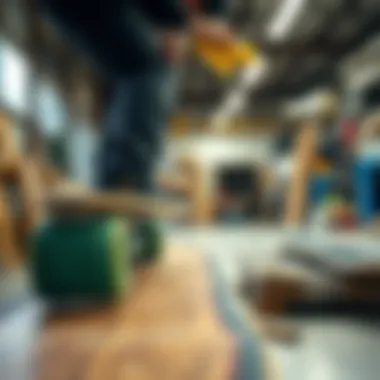
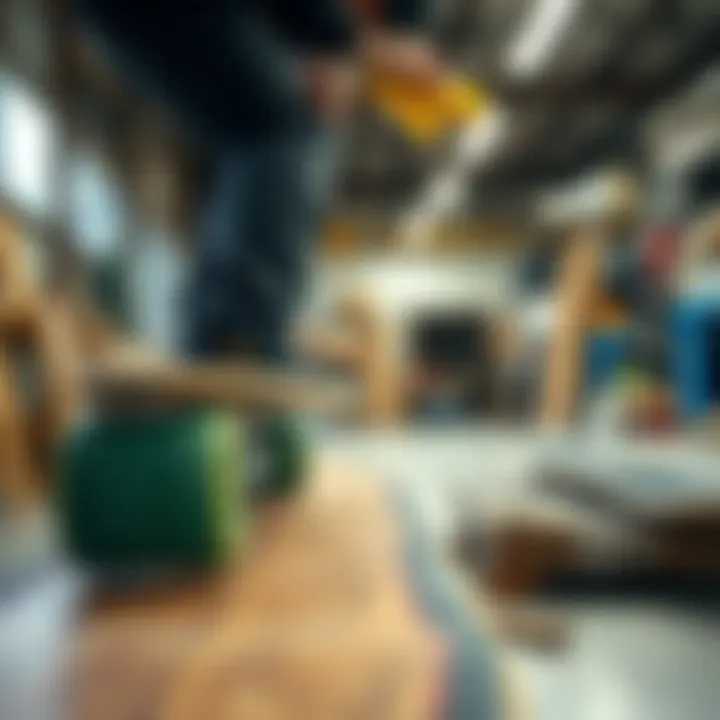
The Shaping Process Explained
The shaping process stands at the heart of longboard creation, blending artistry with engineering principles. It sets the tone for everything else that follows—determining not just the aesthetics but also the performance attributes of the board. When approaching the project, it’s crucial to recognize that each step you undertake operates like a thread in a tapestry, contributing to the holistic experience of riding.
The shaping process involves deliberate planning, precise cutting, and meticulous finishing. This is where vision meets tangible reality—turning a rough plank of wood into a finely tuned instrument. Understanding this process equips both novices and experienced shapers with the skills to adjust designs according to user needs and evolving trends.
Initial Planning and Design
Before any wood is cut, the stage of planning and design lays the groundwork for the entire project. Here, shapers must consider the type of riding that will be prioritized. Factors like board length, width, shape, and flex are essential variables in the planning phase.
Take a moment to visualize the journey of the board. Will it be used for cruising along boardwalks or tackling the tight turns of downhill sessions? Each end goal naturally dictates the specifications needed.
When mapping out a plan, sketching can be incredibly helpful. Having a visual reference serves not only as a guide but also acts as a great way to communicate your vision. It allows for errors to be caught in this phase rather than during cutting or shaping. Also, consider using design software that can provide a digital outline and dimensions to work from.
Cutting the Wood: Techniques and Accuracy
With a solid plan sketched out, it’s time to get down to business: cutting the wood. This step demands acute attention to detail, as making a wrong cut can derail the entire project. The two most popular techniques are using a jigsaw or a bandsaw, each tool having its own merits and challenges.
- Jigsaw: Ideal for intricate cuts, but may require more effort to achieve straight lines.
- Bandsaw: Better suited for straight cuts and smoother edges, reducing the need for extensive sanding later.
The key to accuracy lies in measurement. Always double-check your dimensions before making any final cuts, using calipers or rulers to mark guide lines.
One effective tip for cleaner cuts is to add painter's tape along the cut line. This minimizes splintering and can help achieve a more refined edge.
Tapering and Contouring Techniques
Tapering and contouring are critical to ensuring that the board is not only functional but also ergonomically pleasing. These techniques help balance the ride while enhancing the overall aesthetics.
- Tapering: Typically involves thinning the ends of the board, reducing weight while improving maneuverability. Beginners may opt for a simple taper, while advanced shapers can experiment with different angles to find the best blend of stability and agility.
- Contouring: This technique focuses on the board’s belly and rails, impacting how it interacts with different riding surfaces. Creating more dramatic contours can heighten performance but requires practice and a keen eye.
It can be beneficial to watch tutorials from experienced longboard shapers, as their insights can offer real-world tips on technique and approach.
Sanding and Finishing Touches
The final phase of the shaping process is perhaps the most satisfying. Sanding allows you to refine the board and bring it to life. Start with a coarser grit of around 60 to 80 to remove any rough edges, gradually moving to finer grits for a smoother finish, finishing up with around 220-grit.
This stage also presents a chance to add any embellishments or designs you envision for your longboard. You might choose to apply a clear coat to showcase the natural wood grain or delve into custom graphics. Just remember, practical finishes—like grip tape or paint—can also enhance safety and performance.
In summary, shaping a longboard is a process that balances technical precision with creative expression. Each step feeds into the next, crafting a board that not only serves as a transportation tool but as a piece of art, reflecting the identity and desires of its creator. For those eager to dive deeper into longboard shaping, consider exploring resources such as Wikipedia or engaging with communities on Reddit to gain further insights.
Design Aesthetics and Branding
Design aesthetics and branding play pivotal roles in longboard shaping, extending beyond mere functionality to encapsulate an intentional message about the rider's identity and values. A longboard is not just a piece of sporting equipment; it often serves as an extension of an individual’s personality or cultural background. The influences of graphic design, color theory, and the incorporation of personal or cultural elements come together to create a unique board that resonates with a specific audience.
Graphic Design Considerations
When it comes to graphic design on longboards, each element tells a story. The visuals chosen often reflect the shaper’s artistic vision and the nature of the board itself. Selecting graphics that align with the riding community can have a significant impact on the board's appeal. Some considerations include:
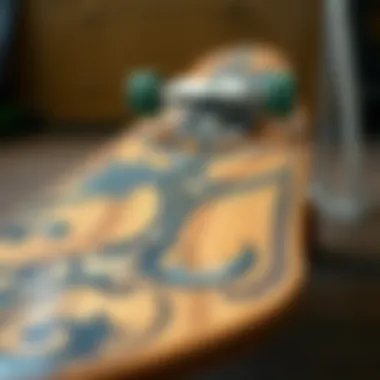
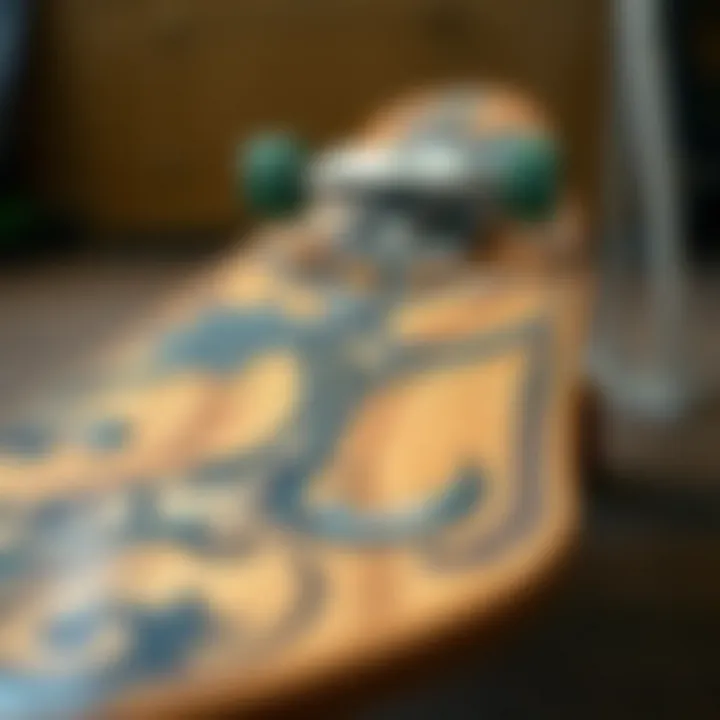
- Theme: Whether it’s surf culture, urban street art, or abstract designs, understanding the target audience aids in branding.
- Placement of Graphics: Where the graphic is situated—top, bottom, or along the sides—can affect the reception of the design.
- Durability of Materials: The graphics should withstand wear and tear from rough riding. Using techniques like screen printing or vinyl wraps can enhance the board's longevity.
By narrowing down the theme and applying thoughtful design, one creates a longboard that speaks more than just performance; it articulates a lifestyle.
Color Theory in Longboard Creation
Color isn't simply decorative; its psychology can evoke emotions and influence perceptions. Different colors resonate with different audiences, and understanding this can assist shapers in creating more engaging boards. For instance:
- Warm Colors (reds, oranges, yellows): They often convey energy and excitement, appealing to those with a daring spirit.
- Cool Colors (blues, greens, purples): These may appear calming or stylish, possibly drawing in a more relaxed rider.
- Contrasts: A well-contrasted color palette can draw attention and boost visual interest, making some designs pop more than others.
Selecting a thoughtful color scheme not just enhances visual appeal, but can also create a lasting impression.
Incorporating Personal and Cultural Elements
Incorporating personal and cultural elements into longboard design adds layers of meaning, making each board unique. Riders often wish to express their cultural identity or personal stories through art. Consider the following aspects:
- Symbols: Cultural symbols, motifs, or patterns can serve as a celebration of heritage.
- Personal Stories: Some riders may choose to include designs that tell their own stories—like mountains representing adventures, or ocean waves symbolizing a love for the sea.
- Community Influence: A board that reflects local culture or skate community vibes strengthens connection within groups, contributing to a sense of belonging.
In essence, these elements transform longboarding from a casual hobby into a canvas for artistic expression and cultural dialogue.
“A longboard is more than just a ride; it’s a canvas that reflects stories, passions, and identities.”
In summary, the design aesthetics and branding of longboards serve a dual purpose: they enhance visual identity while fostering personal and communal connections. It is through these artistic choices that longboards evolve into symbols of expression, making them far more significant than just sport equipment.
Testing and Feedback
Testing and feedback play a crucial role in the longboard shaping process. The journey extends beyond crafting a board that looks good or feels right in theory. It necessitates practical evaluation to ensure performance, durability, and rider satisfaction. Testing allows shapers to put their designs through the wringer, helping them identify areas that may need tweaking or a complete redesign. Feedback from users provides invaluable insights into how the board interacts with various riding styles and conditions.
Incorporating feedback is like having an ace up your sleeve; it not only helps in perfecting the current model but also influences future designs. Longboard shapers must understand that their boards will be subjected to different terrains, speeds, and riding techniques. With real-world testing and user input, they can refine their craft and ensure a quality product that meets the demand of thrill-seekers and adventure lovers alike.
Performance Testing Methods
When it comes to performance testing, the methods can vary significantly yet are all aimed at achieving a similar result: ensuring the board handles competently under various conditions. Some effective testing methods include:
- Controlled Testing: This involves using a controlled environment to assess the board's stability, responsiveness, and overall durability. Different weights and riding styles can be simulated to provide insights about performance characteristics.
- Field Testing: Taking the longboard to different terrains—smooth pavement, rough paths, and even downhill slopes—allows shapers to gauge how the board performs in real-world conditions. Riders are encouraged to push their limits, enabling testers to identify potential flaws.
- Feedback Loops: Setting up a process whereby testers can report their experiences can clarify what aspects work well and what may need improvement. Providing a structured form could streamline this process.
In a nutshell, performance testing is about pushing the longboard to its limits and beyond, ensuring it stands the test of time and speed.
Gathering User Feedback for Improvement
Once a board has been put through testing phases, gathering user feedback is essential. The insights provided by riders can direct the shaper's next steps and help refine the overall design. Some practical ways to collect this feedback include:
- Surveys: Using online or in-person surveys can simplify data collection. Asking simple yet specific questions ensures that you get actionable feedback. For instance, one might ask riders about comfort, maneuverability, and overall satisfaction.
- Rider Focus Groups: Bringing riders together for an open discussion can unveil deeper insights. You can use this setting to explore their experiences and incorporate their suggestions directly into future designs.
- Monitor Social Media: Social platforms like Reddit and Facebook are treasure troves of user feedback. Shapers can gain insights from community discussions, looking for trends in what riders appreciate or criticize about current models.
The bottom line is that feedback isn't just a formality; it's a lifeline that can help shape the future trajectory of a longboard. Riders hold the key to innovation. By closely listening to their experiences, shapers can elevate their craftsmanship, merging artistry with functionality, and ensuring the end product resonates with the very culture of longboarding.
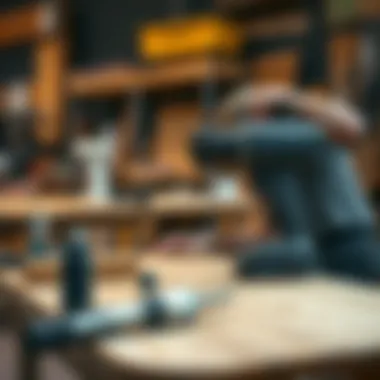
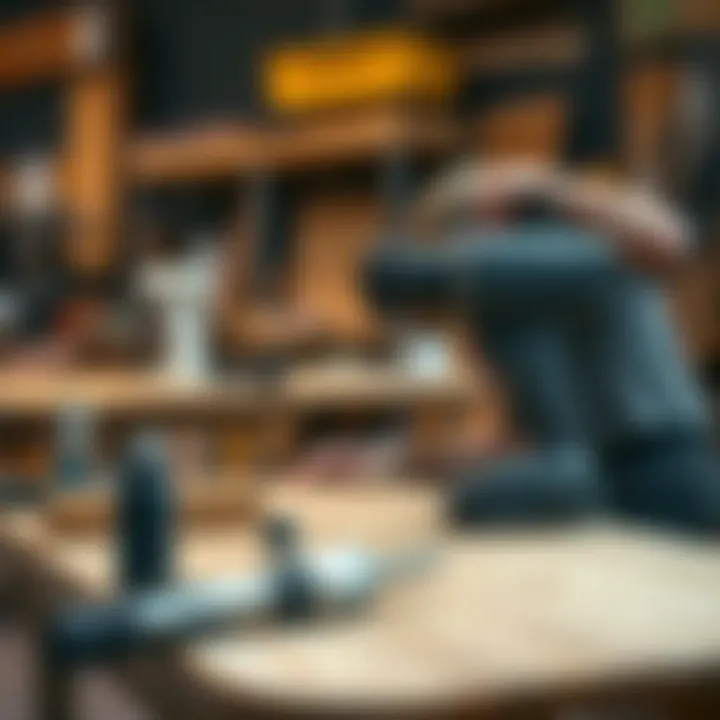
The Future of Longboard Shaping
Longboarding isn’t just a pastime; it’s a culture and a community built on passion, skill, and creativity. As interest in this sport continues to grow, so too does the importance of longboard shaping. The future of longboard shaping is critical not just for seasoned boarders but for everyone involved in the longboarding world. It’s about embracing innovation while maintaining the essence of craftsmanship. Shapers strive to create boards that are not only functional but also sustainable and tailored to individuals’ style and needs.
The direction longboard shaping is headed in plays a crucial role in enhancing performance, promoting creative expression, and minimizing ecological impact. Understanding these emerging trends is vital for anyone looking to stay ahead in the game.
Emerging Materials and Technologies
As technology advances, new materials are making waves in the longboarding industry. Shapers are no longer confined to traditional woods like maple and bamboo; they’re exploring composites and fibers that offer superior performance and durability. For instance, carbon fiber is gaining popularity for its remarkable strength-to-weight ratio, providing riders with boards that are lighter yet sturdier.
Furthermore, resin-infused molds are becoming more common, allowing for precision craftsmanship and unique shapes that were previously unimaginable. This kind of technology not only enhances performance but opens doors to creative freedom, helping to craft boards that reflect both personal style and functional needs.
"Innovation is the catalyst for evolution in longboarding, shaping the experience into something unparalleled."
Some emerging materials to look out for include:
- Fiberglass: Often used alongside traditional woods, it reinforces the board’s structure.
- Eco-resins: Biodegradable materials have emerged, reducing the environmental footprint of board manufacturing.
- Bamboo composites: These use a mix of bamboo and other materials, enhancing strength while keeping weight down.
Sustainable Practices in Longboard Manufacturing
Today’s riders are increasingly conscious of their impact on the environment, prompting a shift toward sustainable practices in longboard shaping. Eco-friendly manufacturing methods focus on using renewable resources and low-impact processes. By opting for sustainably sourced wood or non-toxic finishes, shapers can create high-quality boards that respect the environment.
It’s not just about the materials; it’s also about the manufacturing process. For instance, local sourcing reduces carbon footprints, while small-batch production limits waste and promotes craftsmanship. Additionally, recycling old boards into new products contributes to a circular economy, further supporting sustainability efforts.
Consider the following sustainable methods:
- Using reclaimed wood: Repurposing wood from old furniture or homes gives a second life to materials that might otherwise be discarded.
- Water-based finishes: These finishes are less harmful to the environment compared to traditional solvents.
- Innovative design: Crafting boards with longevity in mind decreases frequency of replacements, effectively reducing waste.
Further insights on longboarding can be found at Wikipedia and discussions can be explored on platforms like Reddit.
Community and Culture Around Longboarding
Longboarding is not just a sport; it embodies a vibrant community and culture that thrives on creativity, innovation, and personal expression. The essence of longboarding stretches beyond the technical aspects of shaping and riding; it delves into how individuals connect, share, and celebrate their passion for this unique form of mobility. Appreciating the community and culture surrounding longboarding allows enthusiasts to enrich their experiences and foster a greater understanding of the lifestyle. From local meetups to global events, the networks formed contribute to the growth and evolution of the longboarding scene.
Shaping Communities and Networks
The longboarding community is a melting pot of different cultures, ideas, and practices. Local groups often form around shared interests, leading to friendships that extend beyond rides in the park or down coastal hills. In many cities, enthusiasts gather for group rides, competitions, and workshops, sharing insights and techniques on board shaping, riding styles, and safety tips.
Moreover, social media platforms serve as vital conduits for these networks. Riders often post videos, tutorials, or raw footage of their latest tricks, drawing in viewers from all over the globe who might aspire to join the ranks of skilled longboarders. Dedicated subreddits on sites like reddit.com connect like-minded individuals eager to learn and share their journeys. The culture fosters a non-competitive spirit, emphasizing collaboration over rivalry, which is essential for the growth of both novice and seasoned shapers.
Notably, local events can also elevate a community's presence on a larger scale. Events like the Maryhill FSR, held in Washington State, bring together longboarders from all walks of life. Participants not only showcase their skill but also interact with industry leaders and learn about innovations in shaping techniques and materials.
Celebrating Longboarding as an Art Form
Longboarding, in many respects, is a form of artistic expression. The aesthetic choices made during the board-shaping process speak volumes about an individual's unique style and vision. From the selection of wood types and shapes to the finishing touches with paints and graphics, every decision informs the story of the longboard and, by extension, the rider's personality.
Enthusiasts are often keen to personalize their boards, integrating cultural symbols, artistic designs, or even personal mantras that resonate with them. This expression creates a bond between the rider and their longboard, making each piece feel like an extension of themselves.
Furthermore, the art of longboarding celebrates innovation and invention. Many shapers have begun collaborating with artists and designers, exploring how to marry functionality with visual flair. This partnership sparks creativity, leading to limited-edition boards that redefine traditional aesthetics.
"Longboarding is more than just practice; it's an art form that allows each rider to narrate their journey through wood, wheels, and paint."
The collective culture also extends to recognizing longboarding as an art form through festivals and exhibitions. Events where riders display their creations and perform tricks help legitimize the longboard community's artistic contributions. The recognition of longboarding in the realm of art is essential, as it positions the practice alongside more traditional art forms, encouraging even more creativity and passion within the community.







